105 years ago today, Sir Barton became the first racehorse in history to win the Triple Crown. A chestnut colt bred in 1916 on a farm near Lexington, Kentucky. Sir Barton was sired by the British stallion Star Shoot out of the mare Lady Sterling, by Hanover. Sir Barton's paternal grandsire was the 1893 English Triple Crown winner Isinglass. Known to be a grouchy horse, he won the Withers Stakes in 1919 in addition to the Triple Crown. READ more… (1919)
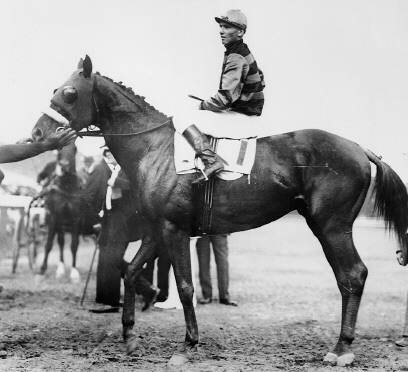 Sir Barton and jockey Johnny Loftus in 1919 – public domain
Sir Barton and jockey Johnny Loftus in 1919 – public domainSir Barton was officially recognized as the first Triple Crown winner in 1950 when the title was formally proclaimed by the Thoroughbred Racing Associations and retroactively awarded to horses who had completed the feat in prior years. In 1968 his remains were moved to Washington Park in Douglas, Wyoming, where a memorial was erected to honor America's first Triple Crown winner.
MORE Good News on this Day:
38 years ago today, Ferris Bueller’s Day Off hit the big screen.
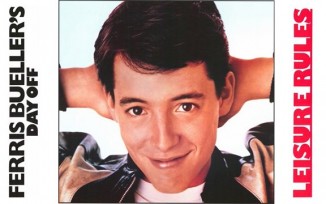
The hit comedy directed by John Hughes tells the epic tale of teenagers skipping school. Starring Matthew Broderick as the mischievous Ferris, the story follows him, his girlfriend, and best friend Cameron, as they play hooky, evade the school’s principal, steal Cameron’s father’s Ferrari, and cavort around downtown Chicago. On the 30th anniversary the city held a “Ferris Fest” to celebrate the film’s debut. WATCH a scene involving the principal… (1986)
And, on this day in 1742, Benjamin Franklin invented his Franklin circulating stove. 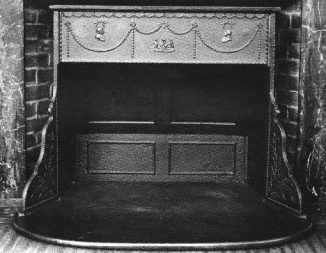 Incorporating new concepts about heat from French scientists, Franklin’s stove was designed to deliver more heat into the room with less smoke. The U.S. founding father never patented any of his designs and inventions, believing that “as we enjoy great advantages from the inventions of others, we should be glad of an opportunity to serve others by any invention of ours, and this we should do freely and generously”.
Incorporating new concepts about heat from French scientists, Franklin’s stove was designed to deliver more heat into the room with less smoke. The U.S. founding father never patented any of his designs and inventions, believing that “as we enjoy great advantages from the inventions of others, we should be glad of an opportunity to serve others by any invention of ours, and this we should do freely and generously”.
Also on this day, 91 years ago, Gene Wilder was born Jerry Silberman in Milwaukee, Wisconsin, and was just 11 when he fell in love with acting. 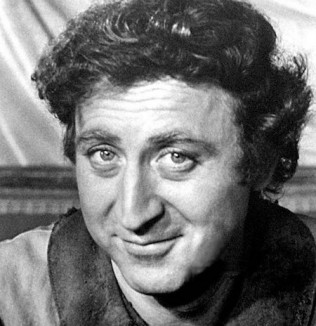
After joining the Actors Studio and choosing a stage name, he performed in Shakespeare productions before being nominated for an Oscar for his first major film role in The Producers. He is beloved for his portrayal of Willy Wonka and also appeared in Blazing Saddles and Young Frankenstein. Tired of the business surrounding filmmaking, and seeing mostly scripts that involved only “shooting, swearing and 3-D”, Wilder became an author in later life writing novels and short stories. (1933)
And, on this day in 1969, Peter Dinklage was born in Morristown, New Jersey. Best known for his role as Tyrion Lannister on HBO's Game of Thrones, which earned him three Emmys, Dinklage has just accepted his first major film role since that 8-season run. He reportedly will star opposite Rosamund Pike in the thriller I Care a Lot. After his breakout role in The Station Agent, he appeared in Elf and Three Billboards Outside Ebbing, Missouri, which earned him his first SAG Award—as well as X-Men and Avengers movies. WATCH him discuss the final shows, and how much Tyrion has meant to him… See more his movies and merch on Amazon…
And, 254 years ago today, the Great Barrier Reef was discovered by British cartographer Captain James Cook off the Australian coast. Cook’s scientific voyage as captain of the HMS Endeavour resulted in splendidly detailed maps of the coastland of New Zealand and eastern Australia, which were used by modern sailors until the 1950s. Among the 94 men on board were artists (the photojournalists of their day) and botanists who brought back flora and fauna from the land down under and increased the tally of plant species known to Western science by 10%.
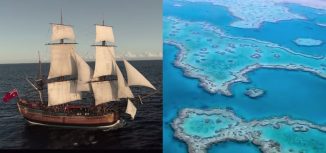 Replica of the Endeavour, and the Great Barrier Reef
Replica of the Endeavour, and the Great Barrier ReefProtected as a World Heritage Site, the Great Barrier Reef is the largest structure in the world made of living organisms. Cook ran aground at a location near Queensland, which is now known as Endeavour Reef—named for the ship. Beached for an entire day the crew ended up tossing 50 tons into the sea so the ship could float higher, and when the tide rose a bit, she was freed to return to the open ocean.
In 1969 an underwater search discovered the six abandoned cannons, ballast, and an anchor that had been discarded. The six original cannons are on display at Botany Bay, Cooktown, Canberra, Philadelphia, Wellington, NZ, and London.
The three-year voyage is remembered as one of history’s greatest journeys of discovery. Cook named new features, but always used the native names of the islands and coastlines on European maps for the first time—all crafted using his superior surveying and cartographic skills. WATCH a short video… (1770)
SHARE the Milestones, Memories, and Music…
Source link

